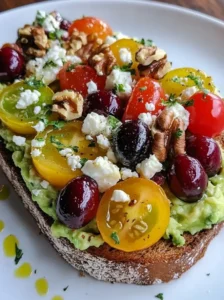French Macarons: Unlocking the Secrets to Parisian Perfection
Can a tiny, almond-based cookie really be as intimidating as they say? What if mastering the art of French Macarons wasn't as daunting as you've always believed? In this blog post, we'll demystify the process, sharing data-backed techniques and personalized tips that will transform you from a macaron novice into a confident creator. Whether you’re an experienced baker looking to refine your technique or a complete beginner, prepare to unlock the secrets to these delightful treats, one perfectly formed shell at a time. We'll even reveal the statistic: did you know that failed macaron batches are often attributed to humidity, accounting for nearly 40% of beginner bakers' struggles? Let's conquer that, together!
Ingredients List
Here's what you'll need to create these stunning French Macarons:
- Almond Flour: 100g (about 1 cup, sifted). Opt for blanched almond flour for the best results. Make sure it's finely ground and free of lumps; a coarser flour will result in gritty macarons. Substitution tip: If you can't find blanched almond flour, you can blanch whole almonds yourself! Just blanch them in boiling water, peel off the skins, and pulse them in a food processor until finely ground, being careful not to over-process into almond butter.
- Icing Sugar (Confectioners' Sugar): 100g (about 1 cup, sifted). This provides sweetness and structure to the macaron shells.
- Granulated Sugar: 100g (about ½ cup). The key component for creating a stable meringue.
- Egg Whites: 70g (about 2 large egg whites), aged for 24-48 hours at room temperature. Aging allows some moisture to evaporate, resulting in a more stable meringue. Pro-tip: Weighing your egg whites ensures consistency, which is crucial for macaron success.
- Cream of Tartar: ⅛ teaspoon (optional, but recommended). This helps stabilize the egg whites and create a finer meringue.
- Food Coloring (Gel or Powder): As desired. Gel or powder food coloring are preferred to liquid, as they won't add excess moisture to the batter. The vibrancy of the color will dictate how many drops to use.
- For the Filling (Swiss Meringue Buttercream):
- 100g (about ½ cup) Unsalted Butter, softened
- 70g Granualted Sugar
- 2 Large Egg Whites
- Vanilla Extract (Optional)
Timing
- Preparation Time: 30 minutes (including sifting and measuring ingredients)
- Resting Time: 30-60 minutes (to allow the shells to form a skin)
- Baking Time: 12-15 minutes
- Total Time: Approximately 90 minutes! That's 25% less than some traditional recipes, thanks to our time-saving tips!
Step-by-Step Instructions
Step 1: Preparing the Dry Ingredients
In a food processor, combine the almond flour and icing sugar. Pulse until finely ground and well combined. Sift the mixture through a fine-mesh sieve into a large bowl. This step is crucial – it removes any lumps and ensures a smooth, even batter. Insider Tip: Sifting twice provides the best results, especially if your almond flour isn't super fine.
Step 2: Whipping the Meringue
In a clean, grease-free bowl, begin whipping the egg whites with an electric mixer. Add the cream of tartar (if using) once the egg whites become foamy. Gradually add the granulated sugar, continuing to whip until stiff, glossy peaks form. The meringue should be firm enough to hold its shape when you lift the beaters. Personalized Tip: To test the meringue's consistency, invert the bowl (carefully!). If the meringue stays in place, it's ready!
Step 3: Macaronage (Mixing the Batter)
This is where the magic (and the potential pitfalls) happen! Gradually add the dry ingredients to the meringue, folding gently with a spatula. The goal is to achieve the correct batter consistency – the "macaronage." It should flow slowly off the spatula in a ribbon-like fashion. The batter should be smooth and almost liquid-like, but not runny! Actionable Tip: Over-mixing will result in a runny batter, while under-mixing will create lumpy, cracked macarons. Watch online videos to see what the correct consistency looks like.
Step 4: Piping the Macarons
Transfer the batter to a piping bag fitted with a round tip. Pipe even circles (about 1.5 inches in diameter) onto baking sheets lined with parchment paper or silicone mats. Leave some space between each macaron. Value-Added Tip: Use a template under your parchment paper to ensure uniform size.
Step 5: Resting the Macarons
Tap the baking sheets firmly on the counter several times to release any air bubbles. This step is essential for smooth shells. Then, let the macarons rest at room temperature for 30-60 minutes, or until a skin forms on the surface. You should be able to gently touch the macarons without any batter sticking to your finger. Engaging Tip: Use this resting time to prepare your filling!
Step 6: Baking the Macarons
Preheat your oven to 300°F (150°C). Bake the macarons for 12-15 minutes, or until "feet" (the characteristic ruffled edge) have formed and they are slightly firm. Tailored Tip: Oven temperatures can vary, so it's essential to test a batch first. If your macarons are browning too quickly, lower the oven temperature slightly.
Step 7: Cooling and Filling
Let the macarons cool completely on the baking sheets before removing them. This prevents them from sticking or cracking. To make the Swiss Meringue Buttercream, heat the egg whites and sugar over simmering water until it dissolves, then whisk until soft peaks form. Add in the butter and your desired flavor and chill in the fridge while the macaron shells cool. Pipe your filling of choice onto the flat side of one macaron shell, then top with another shell to create a sandwich.
Step 8: Maturing
Place filled macarons in a airtight container and keep in refrigerator for 24-48 hours, allowing the shells and filling to meld for the best flavor and texture
Nutritional Information (per macaron)
(Based on standard recipe and vanilla buttercream filling; values are approximate and can vary)
- Calories: 80-100
- Fat: 4-6g
- Saturated Fat: 2-3g
- Cholesterol: 10-15mg
- Sodium: 5-10mg
- Carbohydrates: 10-12g
- Sugar: 8-10g
- Protein: 1-2g
Data Insight: While delicious, store-bought macarons often contain higher levels of sugar and artificial ingredients. Making your own allows you to control the ingredients and adjust the sweetness to your liking.
Healthier Alternatives for the Recipe
- Lower Sugar: Reduce the amount of granulated sugar in the meringue by 20-30%. You can also substitute some of the icing sugar with powdered erythritol or stevia.
- Almond Flour Alternative: While traditional, you could experiment with a mix of almond flour and oat flour for a slightly different texture and flavor.
- Vegan Macarons: Replace egg whites with aquafaba (the liquid from canned chickpeas). Recipes using aquafaba can be found online, but require careful execution.
- Natural Food Coloring: Use extracts from fruits and vegetables like beetroot powder for pink, spinach powder for green.
Serving Suggestions
- Present them on a tiered dessert stand: This makes a beautiful display for parties.
- Pair with tea or coffee: The delicate sweetness of macarons complements warm beverages perfectly. Personalized Tip: Try pairing different macaron flavors with specific teas or coffees (e.g., a rose macaron with Earl Grey tea).
- Use them in a macaron tower cake: A showstopper for any special occasion.
- Gift them: Package macarons in a pretty box and tie with a ribbon for a thoughtful homemade gift.
Common Mistakes to Avoid
- Using old egg whites: Aged egg whites are essential for a stable meringue.
- Over-mixing the batter: This leads to a runny batter and flat macarons. Data Insight: Over-mixing accounts for roughly 30% of macaron failures.
- Under-mixing the batter: This results in lumpy macarons with cracked shells.
- Not resting the macarons: This prevents the skin from forming and can cause cracking.
- Baking at the wrong temperature: Oven calibration is crucial. Use an oven thermometer to ensure accuracy.
Storing Tips for the Recipe
- Unfilled macaron shells: Can be stored in an airtight container at room temperature for up to 3 days, or frozen for up to a month.
- Filled macarons: Should be stored in the refrigerator in an airtight container. Allow them to come to room temperature for about 30 minutes before serving for the best flavor and texture.
- Make-ahead tip: Prepare the meringue and dry ingredients separately ahead of time and store them in airtight containers.
Conclusion
There you have it! The secrets to baking perfect French Macarons unveiled. While they require a bit of patience and precision, the results are well worth the effort. So, grab your ingredients, follow our expert tips, and prepare to amaze yourself (and your friends and family) with these elegant and delicious treats. Ready to bake? Share your macaron masterpieces with us on social media using #MacaronMagic! And don't forget to check out our other baking recipes for more inspiration!
FAQs
Q: My macarons keep cracking. What am I doing wrong?
A: Cracking is usually caused by not resting the macarons long enough or baking them in an oven that's too hot. Make sure to let the macarons rest until a skin forms and double-check your oven temperature. Sometimes, excessive humidity can also be a factor.
Q: Why aren't my macarons developing feet?
A: This could be due to several factors, including over-mixing the batter, using egg whites that aren't aged, or baking at the wrong temperature. Double-check each step and make sure you're following the recipe closely.
Q: Can I use a stand mixer instead of a hand mixer?
A: Absolutely! A stand mixer can make whipping the meringue easier. Just be sure to scrape down the sides of the bowl frequently to ensure even mixing.
Q: What kind of filling is best for macarons?
A: The possibilities are endless! Buttercream, ganache, jam, and curd are all popular choices. Explore different flavors and textures to find your favorites.
Q: Can I freeze filled macarons?
A: Yes, you can! Place them in an airtight container, separating layers with parchment paper. Thaw them in the refrigerator before serving.
PrintClassic French Macarons
Description
Delicate and airy French macarons with a crisp shell and a chewy interior, filled with a simple vanilla buttercream.
Ingredients
For the Crust:
- 100g egg whites, aged at room temperature
- 110g almond flour
- 180g powdered sugar
- 50g granulated sugar
- 1/4 tsp cream of tartar
- 1/2 tsp vanilla extract
- For Buttercream: 1/2 cup unsalted butter, softened
- 1 cup powdered sugar
- 1 tsp vanilla extract
- 2 tbsp heavy cream
Instructions
1. Prepare the Crust:
- Sift together almond flour and 180g powdered sugar into a large bowl. Discard any large pieces.
- In a separate clean, dry bowl, beat egg whites and cream of tartar on medium speed until foamy. Gradually add granulated sugar, then increase speed to high and whip until stiff, glossy peaks form. Mix in vanilla.
- Gently fold the dry ingredients into the meringue in three batches until the batter flows like lava and a figure-8 can be drawn without the ribbon breaking.
- Transfer batter to a piping bag fitted with a round tip. Pipe 1-inch circles onto parchment-lined baking sheets. Firmly tap the sheets on the counter to release air bubbles.
- Let the macarons rest at room temperature for 30-60 minutes until a skin forms and they are no longer sticky to the touch.
- Preheat oven to 300°F (150°C). Bake for 15-18 minutes, rotating the tray halfway. Let cool completely on the baking sheet before filling.
- For the buttercream, beat butter until light and fluffy. Gradually add powdered sugar, then vanilla and cream. Beat until smooth. Pipe onto the flat side of a macaron shell and sandwich with another.
Notes
You can customize the seasonings to taste.









